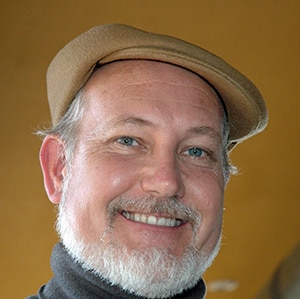
(By Roy Williams) Agnes de Mille once wrote, “No trumpets sound when the important decisions of our life are made. Destiny is made known silently.” Agnes was right about most of us, but she was completely wrong about Herbert.
The story of Herbert and the bullfight begins in 1930, when Louis, a mandolin playing Ukrainian Jewish tailor, comes to America and falls in love with Tillie Goldberg on New York’s Lower East Side. They get hitched, move to L.A., and have two little boys and a girl.
In 1955, first son David is a well-known drummer and second son Herbert is a trumpet player in the marching band at USC. Daughter Mimi is learning to play piano.
In 1962, Herbert is in the garage recording a trumpet song called “Twinkle Star” when he decides to take a break and fling himself across the border into Mexico. He recently told the story on CBS Sunday Morning.
“Tijuana had some world-class matadors, and this trumpet section in the stands, you know, they would announce the different programs, the different events in the bullfight. ‘Ta-da! Pa-da dattle-da-dattle da-dahhh.’ I got kind of, uh, chill bumps from all that stuff, and I tried to translate the feelings of those afternoons to a song.”
Herbert returns home, flavors “Twinkle Star” with the soft and spicy taste of a Tijuana afternoon, and renames it “The Lonely Bull.” He mails his record to some radio stations, and the song becomes a top 10 hit.
Encouraged, Herbert hires some other musicians to play alongside him. Their exotic, jazzy groove is described as “blithe, Latin-over-lilt,” so it’s easy to understand why everyone thinks Herb and his boys are Hispanic. But not one of them has a drop of Spanish blood. Herb describes his band as “four lasagnas, two bagels, and an American cheese.” Audiences know them as Herb Alpert and the Tijuana Brass. In 1966, they sold more records than the Beatles.
Herbert goes on to have five No. 1 hits, 15 Gold albums, and 14 Platinum albums, and he wins eight Grammy Awards. No one but Herb has ever had four albums simultaneously in the top 10. Seventy-two million record albums is quite a few to sell, don’t you think? But Herbert is just getting started.
Immediately following the success of the Lonely Bull album, he convinces Jerry Moss to become his business partner. Alpert and Moss produce and distribute their fantastically successful Tijuana Brass albums under their own record label, A&M.
In 1969, Herb discovers a brother-and-sister duo that becomes fantastically successful as well: Richard and Karen Carpenter. Soon A&M is producing 400 different bands and artists, many of whom will see the stars align to spell their names in the midnight sky.
In 1989, Herb sold A&M Records to Polygram for $500 million. And it all began when the son of a Ukrainian tailor decided to push himself beyond his comfort zone and go on a road trip to Mexico.
How long has it been since you flung yourself into a situation unknown? When was the last time you felt unfamiliar and uncomfortable pressure? Are you willing to push yourself outside your comfort zone?
Pressure, pressure, pressure unspeakable, then bang! The world breaks open and a plateau pops up from solid rock, creating a fabulous view of the land below. That’s what happened in Central Texas. That’s what happens in life, too. But we’ll talk about that in a minute.
Austin and San Antonio straddle the Balcones Escarpment, a magical place where the green meets the brown along a 480-mile crack in the crust of the southern United States. It was created by a continental shift during the Miocene Era, about 12 million years ago. Notable features of this escarpment are its massive artesian springs gushing tens of millions of gallons per day.
But we’re not talking about geology today. We’re talking about you.
And we’re not talking about the sparkling waters that gush up through a crack in the earth. We’re talking about the sparkling creativity that gushes up through a crack in you — and the price of releasing that creativity.
The glistening water of your unconscious mind lies deep beneath your consciousness. The only way for it to come gushing out is through a shifting of tectonic plates.
Few things disturb us so much as those earthquakes that release our creativity. If it’s been a while since you felt the earth shifting beneath your feet, you’re probably feeling “a little dried up.”
Oh! I have your attention now?
Each of us has four different modalities of gathering and processing information, and we arrange them in whatever order we prefer. Your temperament is determined by the order of your preferences.
We operate chiefly in our two most preferred modalities. But when both of these have failed us, we reach deep within and begin operating in our third preferred modality. It feels a little awkward and it causes us stress, but when our top two methods have failed us, it’s what we do.
And if that third-preferred modality doesn’t deliver the desired result, we’ll dig still deeper to lay hold of our least preferred method of interaction. Psychologists call this our inferior function.
We almost never go there.
But when we do — even if we stay there only briefly — the recovery time is glorious. Millions of gallons of creativity come sparkling into the sunlight through the crack created by that earthquake. Dr. Richard D. Grant calls this process “a trapdoor to the unconscious.”
And now you understand why the first day of any transformative situation is crammed full of relentless stimulation. As you struggle up the mountainside, new challenges come roaring at you like boulders during an avalanche. You barely escape one before the next one is upon you. You’re utterly exhausted by the end of the day.
But then you relax and begin to recover. That’s when the magic begins.
It never fails.
Roy Williams is president of Wizard of Ads Inc. Read Roy’s Radio Ink archives here or read his latest column exclusively in the current edition of Radio Ink Magazine HERE.








